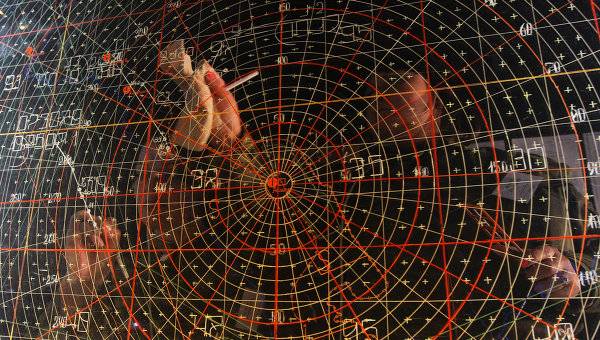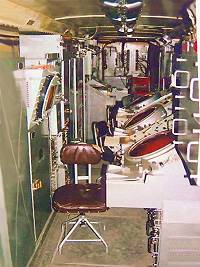Radar Signal Processing and Radar Data Processing

Figure 1: Plotter at the air position indicator map © RIA Novosti. (Mikhail Fomichew)

Figure 1: Plotter at the air position indicator map
© RIA Novosti. (Mikhail Fomichew)
Radar Signal Processing and Radar Data Processing
All measures are referred to as radar signal processing and radar data processing, that calculate from the received echo signal an evaluatable image on the radar display. With radar signal processing is referred the part that is still dealing with the analog (or often present even as a digital value) magnitude of the echo signal. The radar data processing is the part of processing, which concerns only the information about a target. In between there is the process of measuring the coordinates of the reflecting object.
Analog signal processing
In the era of analog radars the possibility of radar signal processing was still very limited and consisted mostly of a system for suppressing interference only. The radar data processing consisted essentially only of the experience of the operator. The operator must visually identify the target signals, which consisted in a tangle of spots on the screen, consisting of noise and fixed target and weather disturbances. Radio location was determined by the decision of the operator to draft a message about a blip on the screen. Then, the coordinates of the target character were measured by the operator. This could be done either by visually estimating the azimuth angle and the distance (in polar coordinates) or by assigning to a grid square (Cartesian coordinates).
The whole signal path up to the presentation on the analog display (usually still equipped with a cathode-ray tube) was radar signal processing. The radar data were transferred to the command post “per voice”, and there supported on a planchette.

Figure 2: Radar display with semi-automatic reporting system (here: PU12M), the arrow points to the position transducer

Figure 2: Radar display with semi-automatic reporting system (here: from the Russian command post “PU12M”), the arrow points to the target position transducer (kyrillic: “Телекарандаш”)
Semi-automatic radar signal processing
In semi-automated systems, a small additional point was written on the screen, which is free to move by a “joystick”. This point has been positioned on the targets blip whose position is to be reported. A click on a button initiated the measurement of the coordinates. Via a keybord the targets number should be entered then. Then a voltage as a vertically value and a second voltage as a horizontally value was tapped by two high-precision potentiometers. From these two voltages then the position was estimated ba a (mostly still analog working) computer. These coordinates were added to the targets number and sent to the automated guidance system.

Figure 3: Interior view of the automated guidance system “WP”
Digital Signal Processing
With the introduction of digital display systems now, however, the technology must perform this task. Fortunately, technological progress is already so far advanced that digital computerized procedures not reduce the performance of the radar in the field of signal processing.
In various radar sets the logical functions of the radar signal processing, however, can be summed up in a few modules in practice . Thus, the plot extractor may be united with the plot processor and the various plot combiners and all together can be combined to form a single assembly.
